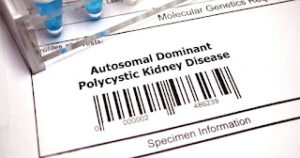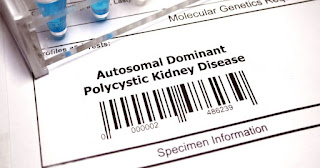Polycystic Kidney Disease: Understanding, Awareness, and Advocacy
Polycystic Kidney Disease (PKD) is a genetic disorder characterized by the growth of numerous cysts in the kidneys, leading to the progressive enlargement of these organs and impairment of their function. PKD is a leading cause of kidney failure and affects millions of people globally. The disease can be inherited in two primary forms: Autosomal Dominant Polycystic Kidney Disease (ADPKD) and Autosomal Recessive Polycystic Kidney Disease (ARPKD). In this article, we will delve into the causes, symptoms, treatments, and the significance of PKD Awareness Day and PKD Awareness Month. Additionally, we will explore the color associated with the campaign and provide information on key treatment institutions.

Polycystic Kidney Disease |
Causes and Genetics of PKD
PKD is primarily caused by genetic mutations. The most common form, ADPKD, is caused by mutations in the PKD1 or PKD2 genes. These mutations result in the abnormal development of kidney cells, leading to the formation of fluid-filled cysts. Over time, these cysts multiply, enlarging the kidneys and impairing their ability to function.
ARPKD, although rarer, is a more severe form of the disease and is typically diagnosed in infancy or early childhood. It is caused by mutations in the PKHD1 gene. Unlike ADPKD, both parents must carry the defective gene for a child to inherit ARPKD.
In both forms, the cysts gradually replace healthy kidney tissue, leading to a decline in kidney function and, ultimately, kidney failure.
Symptoms and Complications of PKD
The symptoms of PKD can vary widely depending on the type and severity of the disease. In many cases, individuals with ADPKD may not experience symptoms until later in life. Common symptoms include:
- High Blood Pressure (Hypertension): One of the earliest and most common signs of PKD. Hypertension can worsen kidney function and increase the risk of cardiovascular disease.
- Pain: Often experienced in the back or sides due to the enlarged kidneys or cyst rupture.
- Kidney Stones: Individuals with PKD are more prone to developing kidney stones, which can cause severe pain and urinary problems.
- Blood in Urine (Hematuria): Caused by cysts bleeding into the urinary tract.
- Urinary Tract Infections (UTIs): Frequent infections, especially in the kidneys.
- Kidney Failure: As the disease progresses, the kidneys lose their ability to filter waste, leading to end-stage renal disease (ESRD).
In ARPKD, symptoms are often more severe and can include:
- Enlarged Kidneys: Detectable through ultrasound, even before birth.
- Respiratory Problems: Due to underdeveloped lungs caused by the enlarged kidneys pushing against the diaphragm.
- Liver Disease: In addition to kidney problems, ARPKD often affects the liver, leading to fibrosis (scarring) and other complications.
Diagnosis of PKD
The diagnosis of PKD typically involves a combination of family history, physical examination, and imaging tests. Ultrasound is the most common imaging technique used to detect cysts in the kidneys. In some cases, CT scans or MRIs may be used to provide more detailed images of the kidneys.
Genetic testing can confirm a diagnosis of PKD, particularly in cases where there is a family history of the disease. Early detection is crucial, as it allows for better management of symptoms and complications.
Treatment Options for PKD
While there is no cure for PKD, treatment focuses on managing symptoms, slowing disease progression, and preventing complications. The following are common treatment options:
- Blood Pressure Control: Keeping blood pressure under control is vital in slowing the progression of kidney damage. Medications such as ACE inhibitors or ARBs are often prescribed.
- Pain Management: Over-the-counter pain relievers like acetaminophen can help manage pain. However, NSAIDs should be avoided as they can worsen kidney function.
- Dietary Changes: A low-sodium diet can help control blood pressure. Additionally, maintaining a healthy weight and staying hydrated are important for overall kidney health.
- Treatment of Infections: UTIs and other infections should be treated promptly with antibiotics.
- Dialysis and Kidney Transplantation: For individuals who reach end-stage renal disease, dialysis or kidney transplantation may be necessary. Dialysis helps filter waste products from the blood, while a kidney transplant provides a more permanent solution.
In recent years, new treatments have emerged that specifically target the mechanisms of cyst growth. Tolvaptan, a drug that slows the growth of cysts in ADPKD, has shown promise in delaying the progression of the disease.
Polycystic Kidney Disease Awareness Month
September is designated as Polycystic Kidney Disease Awareness Month, a time dedicated to raising awareness about PKD, supporting those affected by the disease, and advocating for research and treatment options. Various activities and campaigns take place throughout the month to educate the public about the challenges faced by individuals with PKD and to encourage early diagnosis and treatment.
PKD Awareness Day
In addition to PKD Awareness Month, September 4th is recognized as PKD Awareness Day. This day serves as a focal point for the PKD community, with events, fundraisers, and social media campaigns aimed at increasing visibility for the disease. The day is an opportunity for patients, caregivers, healthcare professionals, and advocates to come together and support one another in the fight against PKD.
The Color of the Campaign: Go Teal for PKD
The color teal is associated with Polycystic Kidney Disease Awareness. During PKD Awareness Month and PKD Awareness Day, individuals and organizations are encouraged to wear teal and participate in events to show their support for the PKD community. The “Go Teal for PKD” campaign emphasizes the importance of raising awareness and promoting understanding of the disease.
Key Institutions for PKD Treatment and Research
Several institutions around the world specialize in the treatment of PKD and are at the forefront of research to find better treatments and ultimately a cure for the disease. Some of the leading institutions include:
- Mayo Clinic: The Mayo Clinic is a renowned medical institution that offers comprehensive care for individuals with PKD. The clinic provides access to a multidisciplinary team of specialists and cutting-edge treatments. Mayo Clinic PKD Page
- National Institute of Diabetes and Digestive and Kidney Diseases (NIDDK): Part of the U.S. National Institutes of Health (NIH), the NIDDK conducts extensive research on PKD and provides valuable resources for patients and healthcare professionals. NIDDK PKD Page
- Cleveland Clinic: The Cleveland Clinic is another leading medical center that offers specialized care for PKD patients. The clinic’s Kidney Center is equipped with advanced diagnostic and treatment options. Cleveland Clinic PKD Page
- PKD Foundation: The PKD Foundation is a non-profit organization dedicated to funding research, advocating for patients, and raising awareness about PKD. The foundation provides a wealth of resources and support for those affected by the disease. PKD Foundation
- National Kidney Foundation (NKF): The NKF is a major organization that provides education, support, and advocacy for individuals with kidney disease, including PKD. NKF PKD Page
Conclusion
Polycystic Kidney Disease is a challenging and often debilitating condition that affects millions of people worldwide. While there is no cure, advances in research and treatment options offer hope for individuals living with PKD. By raising awareness through campaigns like PKD Awareness Month and PKD Awareness Day, we can support those affected by the disease and advocate for continued progress in the fight against PKD.
